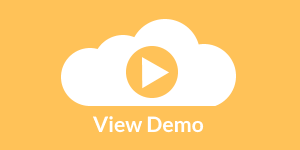Monitoring the Dashboard Server
Administrators are easily able to monitor their dashboard's server with InetSoft's dashboard software - a powerful and flexible business intelligence platform that has shaped the course of business at nearly a quarter of all Fortune 500 companies. View the example below to learn more about the Style Intelligence solution.

| #1 Ranking: Read how InetSoft was rated #1 for user adoption in G2's user survey-based index | Read More |
The servlet status can be 'Running' or 'Stopped', and is displayed on the 'Server' > 'Status' page (in the Server tab).
The servlet can be started, stopped, or restarted using the 'Start', 'Stop' or 'Restart' buttons on the 'Servlet' page. Note that if a web based servlet is being used, it can only be restarted. Starting and stopping are not supported in this case.
A License Key can be administered in the Enterprise Manager through the 'Server' > 'Status' page. A new license key can be added using the 'Add' button. Once the new license key is entered in the text box provided, it can be saved by clicking on the 'Apply' button. One or more of the registered license keys can be deleted by simply selecting the license key to be deleted and clicking on the 'Delete' button.
Information regarding the application server's JVM and CLASSPATH can be found under the 'Server' > 'JVM' node on the tree (under the Server tab).
The only requirement for the Enterprise Manager and Report Portal is a web browser that supports AJAX/JavaScript/Flash. This includes Netscape 7.6 and higher, IE 6.x and higher, Firefox 1.x and higher.
 |
View live interactive examples in InetSoft's dashboard and visualization gallery. |
There are two types of URL, the Repository Servlet URL and the Server URL.
- Repository Servlet URL refers to the web URL of the repository. When you use this link in a web browser, you should see the report repository (assuming the repository servlet is running in the appserver). The URL needs to be formatted correctly; e.g., 'http://localhost:8080/sree/Reports', otherwise you will not connect to the repository servlet. If you are using a relative servlet url, the host IP address and port number can be ignored. As an illustration, the URL format could be '/sree/Reports'.
- Server URL refers to the binding name that is used to bind the report repository object to either the RMI registry or the CORBA name service (depending on whether you are using RMI, clustering, or CORBA). There are several formats for the URL, which allows a great deal of flexibility regarding the naming and binding of the report repository. The format is as follows:
//[server-name]:[port-number]/[binding name]
The server name is required. The port number is optional. If the port number is not specified, then a default RMI port of 1099 is used, with port 1050 used for CORBA. The binding name is optional. If it is not specified, the RMI based repository defaults to RepletRepository. The CORBA based repository also defaults to RepletRepository.
Evaluate InetSoft's Business Intelligence Software for your dashboard software needs. |
View a 2-minute demonstration of InetSoft's easy, agile, and robust BI software. |
| Previous: Dashboard Registry Directory |

